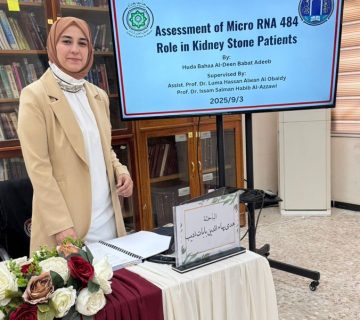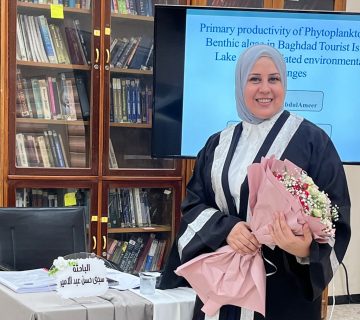Master Discussion
The College of Science for Women at the University of Baghdad examined a master’s thesis entitled “Investigating the Virulence Factors Determinants of Streptococcus mutans Isolated from Dental Caries in Iraqi Type 2 Diabetic Patients”, presented by the postgraduate student [Tiba Abed Maarij]. The study was supervised by [Asst. Prof. Shaymaa Ismael Kadhim] as a requirement for the degree of Master of Science in Biology/Genetics.
The thesis focused on isolating and characterizing Streptococcus mutans from patients with dental caries, including both diabetic and non-diabetic cases, in comparison with healthy controls. The research aimed to investigate the genetic diversity, survival mechanisms, and antibiotic resistance of the bacterium, with special emphasis on genes encoding virulence factors (dexA, atpD, ldh, and vick).
The results showed that Streptococcus mutans was successfully identified in 30 samples, including 17 isolates from patients with both dental caries and type 2 diabetes, and 13 from patients with caries alone. All isolates carried the dexA gene, while varying proportions carried the atpD, ldh, and vick genes. The study also revealed marked differences in antibiotic sensitivity: isolates from diabetic patients showed higher resistance compared to non-diabetic patients, with complete resistance to erythromycin and partial resistance to cefepime, while maintaining sensitivity to vancomycin and ceftriaxone.
The research also employed bioinformatics analyses, including multiple sequence alignment and phylogenetic tree construction, to assess genetic diversity. Four novel Streptococcus mutans isolates from Baghdad were successfully registered in the National Center for Biotechnology Information (NCBI) gene bank under accession numbers PQ796766–PQ796769
The findings highlighted the significant virulence potential and genetic diversity of Streptococcus mutans, particularly in diabetic patients. The study emphasized the importance of continued research to better understand the bacterium’s pathogenic mechanisms and to inform more effective strategies for prevention and treatment of dental caries in vulnerable populations such as type 2 diabetics.
Very Good.










